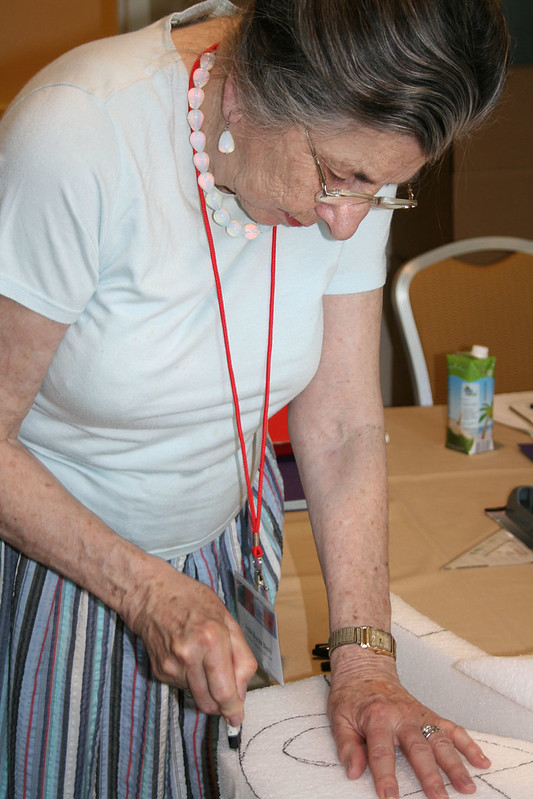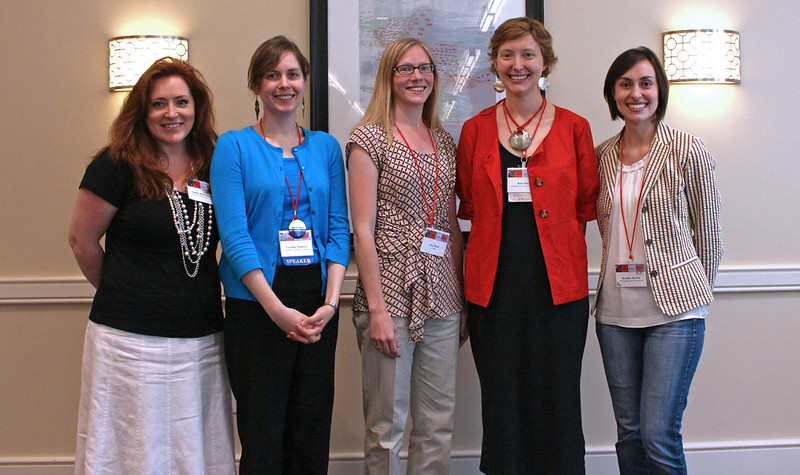
I was very happy to be part of the group of paper conservators gathered in Washington, DC from October 16th- 19th, 2013 for an in-depth study of print identification.
On day 1 and the first part of day 2, the workshop hosts Scott Homolka and Stephanie Lussier, led us through the different categories of print processes, starting with traditional, familiar techniques; then looking at examples of variations and recent developments that might be harder to identify unless you know what you are looking for. We also had several guest lecturers on day 2. Shelley Langdale, Associate Curator of Prints and Drawings at the Philadelphia Museum of Art, gave a lecture on the history of American printmaking studios in the 20th century. Keith Howard, Head of Printmaking and Research at the Rochester Institute of Technology, and Bernice Cross, master printmaker and owner of White Cross Press, brought in examples of contemporary prints created by them and their students in a variety of techniques for us to examine closely. Keith Howard invented the field of non-toxic printmaking with a process he named Intaglio-Type. He has published several books about his techniques and kindly gave each participant a copy of his most recent one, entitled The Contemporary Printmaker: Intaglio-Type & Acrylic Resist Etching, which is considered an essential manual by many people in the field of printmaking today. Lastly, the three printmakers behind the printmaking website Printeresting; Amze Emmons, R.L. Tillman and Jason Urban, gave a talk about the world of printmaking today.
 Scott Homolka explains Richard Serra’s process of applying paintstick through silkscreen
Scott Homolka explains Richard Serra’s process of applying paintstick through silkscreen
Day 3 was spent at the National Gallery of Art. Lucky for us, the government shutdown ended just in time to spend our final day at our planned venue. Our first exercise in the morning was to identify the processes behind some prints in their collection. Some of the prints were particularly tricky, while others were deceptively easy. Then we went to the galleries for a tour of the exhibit Yes, No, Maybe: Artists Working at Crown Point Press given first by the curators Judith Brodie, head of modern prints and drawings, and Adam Greenhalgh, Andrew W. Mellon Postdoctoral Curatorial Fellow; then by one of Crown Point Press’ Master Printers, Emily York. This show features both working proofs and final prints in order to show the process that goes into making a print. Not all of the projects resulted in a print that the artist considered exhibitable, but all showed the creative and technical process behind the creation of prints and in some cases expanded what was possible in printmaking by pushing at the boundaries of the techniques.
Then it was back to the lab to look at Marian Dirda’s collection of printmaking papers from the late 20th and early 21st century. She is a great resource for information about fine art paper mills, and the papers that particular artists or printmaking studios prefer. In fact, I should emphasize that all of the lecturers of this workshop are very accessible and happy to share their knowledge with the conservation community. I recommend reaching out if you have questions about contemporary prints.
 Rosemary Fallon practices a non-toxic version of the ‘spit bite’ technique
Rosemary Fallon practices a non-toxic version of the ‘spit bite’ technique
On day 4, we travelled to Pyramid Atlantic in Silver Spring, MD, where we got to try out Intaglio-Type printmaking for ourselves. Keith Howard and Bernice Cross led us through plate preparation, exposure, development, and printing. After 4 hours, we each had 1-2 prints to keep as references. Day 4 was absolutely my favorite part of the entire workshop. I learned that many studios offer summer weeklong intensive courses in printmaking. I hope to take one someday.
Thanks again to everyone who worked behind the scenes to make this workshop possible despite the government shutdown.





